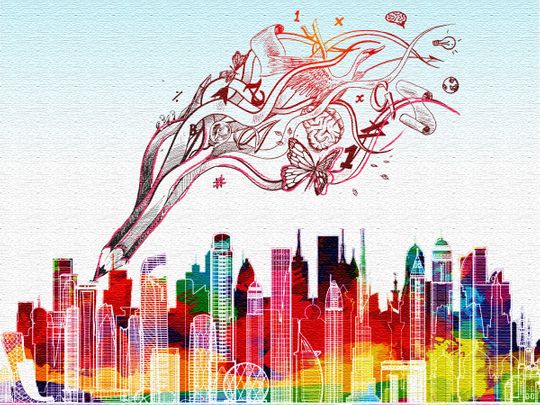
It is hard to resist the allure of a creative city. Throughout history, cities have capitalised on creativity as an engine to reinvent themselves as attractive destinations for residents and visitors. A comparison of travel guidebooks offers glimpses of cities with rich cultural treasures and creative offerings.
Paris with its grand palaces, opulent opera houses, and marvellous gardens. Venice, this aquatic city shrouded in mystery and sumptuousness, host to the Venice Biennale, Venice Film Festival, and a cultural treasure. Tokyo, an artist’s dream canvas coming to life with bookshops and museums, countless cultural activities during the cherished cherry blossom season, and streets filled with graffiti art and people dressed in famous characters’ costumes.
Indeed, such cities were designed to captivate visitors with their unforgettable, splendorous ambiences. There is much buzz surrounding creative cities, which rely heavily on creativity and culture to form a distinctive brand for themselves.
Many cities share a set of qualities that make them uniquely fascinating, spellbinding, and memorable. Such cities have thriving creative industries, with much support for nurturing creatives and facilitating the establishment of creative enterprises.
Furthermore, building cultural infrastructures and incorporating creativity into everyday urban design is a distinctive factor that gives the city its unique look and feel. Also, its flourishing cultural calendar is full of exciting events all year-round for residents and tourists.
In 2013, the Unesco, International Confederation of Societies of Authors and Composers, and EY published a seminal report on the significance of cultural and creative industries worldwide as drivers of economic growth in both developed and developing markets.
Data revealed that these sectors generated $2,250 billion globally (3% of world GDP) and employed 29.5 million people, making them the fastest growing sectors worldwide. On this note, it is important to mention as well that cultural tourists make up 35.8% of total tourism, according to the World Tourism Organization.
Investing in the cultural and creative industries could address a number of challenging issues facing the MENA region, home to over 456 million people. From an economic perspective, it would drive cultural tourism, increase worker productivity, encourage the establishment of small and medium enterprises, boost exports, and create jobs for disadvantaged groups, such as youths and females.
Fostering cultural dialogue
In addition to these economic benefits, regular access to cultural and creative activities promote physical and emotional well-being among society, in addition to improving social cohesion, fostering cultural dialogue, and increasing citizen pride of their city’s unique heritage and culture.
Interestingly, many governments and private sector companies are also experimenting with design thinking, much used by creatives, as an effective tool for formulating innovative solutions to today’s complex challenges.
The significance of these sectors has inspired 66 cities to join the Unesco Creative Cities Network, established in 2004, to recognise the role of creativity as a key contributor to urban development. Many cities have been sharing their success stories on this regard.
For example, the city of Prague has a vibrant contemporary literary scene, with literary museums, literary cafés, and 200 book shops, deemed as one of the highest concentration of bookshops in Europe. An international poetry festival, a writers’ festival, and an annual book fair are grand affairs where literature is celebrated across the city.
Similarly, Seoul has reinvented itself as a design hub, with 73% of Korean designers concentrated in the city. Its design sector has revitalised the economy, generating over 170,000 jobs within manufacturing, design consultancy, and fashion design — many of which have conceptualised successful products and services.
The ultra-modern Dongdaemun Design Plaza, designed by Zaha Hadid, comprises a design museum, a design lab dedicated to incubating new products, a design library, and educational facilities. Additionally, it is regularly used as a prime venue for exhibitions, performances, conferences, cultural events, and fashion shows.
UAE as a cultural hub
Within the region, the UAE has embraced creativity as the heartbeat shaping everyday life in its cities, transforming them into creative hubs for the arts, design, literature, and film industries. Its calendar boasts an exhilarating array of creative activities, ranging from book fairs, literary festivals, and performing arts shows, to film screenings, art exhibitions and creative workshops. Additionally, its educational institutions offer a variety of creative degrees spanning visual arts, architecture, creative writing, art history, design, film and new media, music, and theatre.
The annual international art fairs, Abu Dhabi Art and Art Dubai, attract many prestigious exhibitors and art aficionados to its glittering venues. The theatre scene is vibrant and connoisseurs are able to attend world-class performing arts production.
For example, Dubai Opera regularly welcomes the finest and most engaging of opera, ballet, orchestras, concerts, and theatres in its grand and glittering 2000-seat auditorium. The annual Emirates Airline Festival of Literature is running to its 13th edition in 2021 and will be hosting a series of author talks, masterclasses, and exhibitions over three weekends, in partnership with Jameel Arts Centre and Al Serkal Avenue.
Furthermore, the UAE has been investing heavily in world-class cultural infrastructure, such as public libraries, museums, design zones, art galleries, and opera houses. Sharjah, which held the Unesco World Book Capital title in 2019, recently inaugurated its iconic House of Wisdom library, which houses over 305,000 books.
The soon-to-open Mohammed bin Rashid Library, with its stunning building resembling an open book, will house over 4.5 million books. The Louvre Abu Dhabi’s unrivalled collections are considered of artistic, historical, and cultural significance.
By integrating creativity as an essential element in urban design, cities can certainly expect to make themselves serious contenders in today’s global economy.
Sara Al-Mulla is an Emirati civil servant with an interest in human development policy and literature. She can be contacted via www.amorelicious.com.




